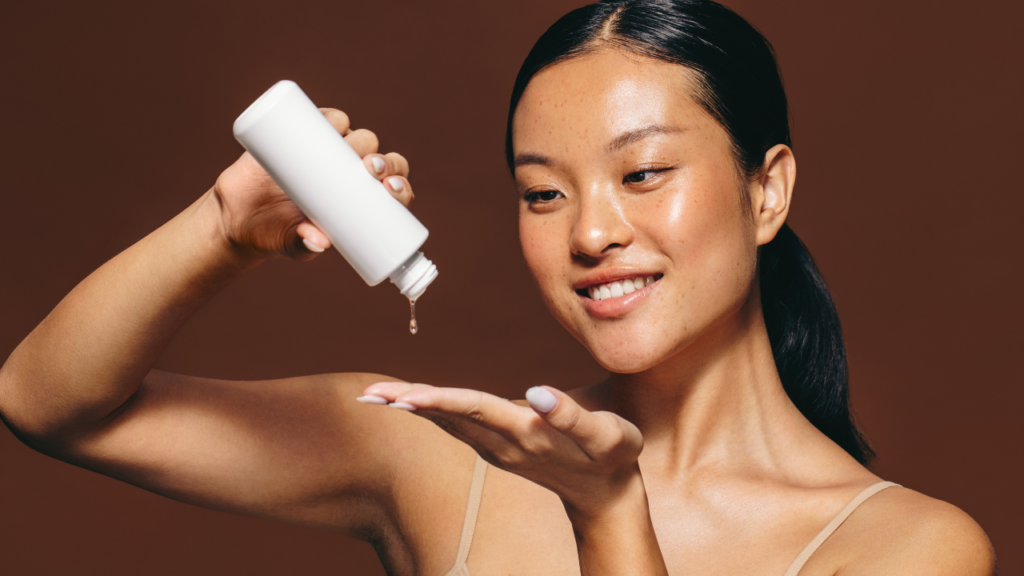Having healthy, glowing skin is a common goal for many people, and achieving it often comes down to following a consistent and effective skincare routine. With so many products and advice available, it can be overwhelming to figure out what truly works. Here, we break down the top five skincare routines that can help you achieve radiant skin, regardless of your skin type.
1. Cleansing: The Foundation of Any Skincare Routine
Cleansing is the cornerstone of any skincare routine. Throughout the day, your skin is exposed to various pollutants, dirt, and oils that can clog pores and lead to breakouts. A proper cleansing routine helps to remove these impurities and prepare your skin for the subsequent steps in your skincare regimen.
- Morning Cleanse: Start your day with a gentle cleanser that suits your skin type. For dry or sensitive skin, a hydrating cleanser with soothing ingredients like chamomile or aloe vera can be beneficial. For oily or acne-prone skin, opt for a foaming or gel-based cleanser with salicylic acid or tea tree oil to help control excess oil production.
- Evening Cleanse: At night, consider double cleansing, especially if you wear makeup or sunscreen. Begin with an oil-based cleanser to dissolve makeup and sunscreen, followed by a water-based cleanser to remove any remaining dirt and oil. This two-step process ensures that your skin is thoroughly cleansed and ready for nighttime treatments.
2. Exfoliation: Removing Dead Skin Cells for a Brighter Complexion
Exfoliation is essential for maintaining smooth, glowing skin, as it helps to remove dead skin cells that can accumulate on the surface and cause dullness. However, it’s important to exfoliate correctly to avoid damaging your skin.
- Physical Exfoliation: This method involves using a scrub or a brush to manually slough off dead skin cells. Choose a gentle scrub with fine particles to avoid micro-tears in your skin. Use physical exfoliants once or twice a week, depending on your skin’s tolerance.
- Chemical Exfoliation: Chemical exfoliants use acids like alpha hydroxy acids (AHAs) or beta hydroxy acids (BHAs) to dissolve dead skin cells. AHAs, such as glycolic or lactic acid, are water-soluble and work well for dry or sun-damaged skin. BHAs, like salicylic acid, are oil-soluble and ideal for oily or acne-prone skin. These exfoliants can be used more frequently than physical exfoliants, depending on the product’s strength and your skin’s sensitivity.
Regular exfoliation not only brightens your complexion but also allows other skincare products to penetrate deeper and work more effectively.
3. Moisturizing: Hydration is Key
Moisturizing is crucial for all skin types, even if you have oily skin. A good moisturizer helps to maintain the skin’s barrier function, locking in hydration and preventing moisture loss.
- Choosing the Right Moisturizer:
- For dry skin, opt for a rich, cream-based moisturizer containing ingredients like hyaluronic acid, ceramides, or glycerin that attract and retain moisture.
- If you have oily or acne-prone skin, look for a lightweight, oil-free moisturizer with mattifying properties to control shine without clogging pores.
- Combination skin types may benefit from a gel-based moisturizer that provides hydration without being too heavy.
- Application: Apply moisturizer immediately after cleansing or exfoliating, while your skin is still damp, to seal in moisture. Don’t forget to extend the application to your neck and décolletage, areas that are often neglected but can show signs of aging.
4. Sun Protection: Shielding Your Skin from Harmful UV Rays
One of the most critical steps in any skincare routine is sun protection. Ultraviolet (UV) rays from the sun can cause premature aging, hyperpigmentation, and increase the risk of skin cancer. Protecting your skin from the sun is non-negotiable if you want to maintain a healthy, glowing complexion.
- Daily Sunscreen: Apply a broad-spectrum sunscreen with at least SPF 30 every morning, even on cloudy days or when staying indoors, as UV rays can penetrate through windows. For added protection, consider a sunscreen that contains antioxidants like vitamin C or E, which can neutralize free radicals generated by UV exposure.
- Reapplication: Sunscreen should be reapplied every two hours if you’re spending time outdoors, and more frequently if you’re swimming or sweating. Consider using a powder or spray sunscreen for easy reapplication over makeup during the day.
- Additional Protection: Wear protective clothing, wide-brimmed hats, and sunglasses to shield your skin from the sun’s harmful rays. Seek shade whenever possible, especially during peak sun hours from 10 a.m. to 4 p.m.
5. Targeted Treatments: Addressing Specific Skin Concerns
Once you have the basics of cleansing, exfoliating, moisturizing, and sun protection in place, you can introduce targeted treatments into your routine to address specific skin concerns such as acne, hyperpigmentation, or aging.
- Serums: Serums are concentrated formulas that deliver active ingredients deep into the skin. Depending on your needs, you can choose serums with ingredients like vitamin C for brightening, retinol for anti-aging, or niacinamide for soothing inflammation and reducing redness.
- Spot Treatments: If you struggle with occasional breakouts, a spot treatment containing benzoyl peroxide or salicylic acid can help to quickly reduce the size and severity of pimples. Apply these treatments only to the affected areas to avoid drying out the surrounding skin.
- Masks: Incorporating a face mask into your routine once or twice a week can provide an extra boost of hydration, exfoliation, or purification. Clay masks are great for oily skin, while hydrating masks with ingredients like hyaluronic acid are ideal for dry skin.
- Eye Creams: The skin around the eyes is delicate and prone to showing signs of aging and fatigue. Use an eye cream with peptides or caffeine to reduce puffiness, dark circles, and fine lines.


